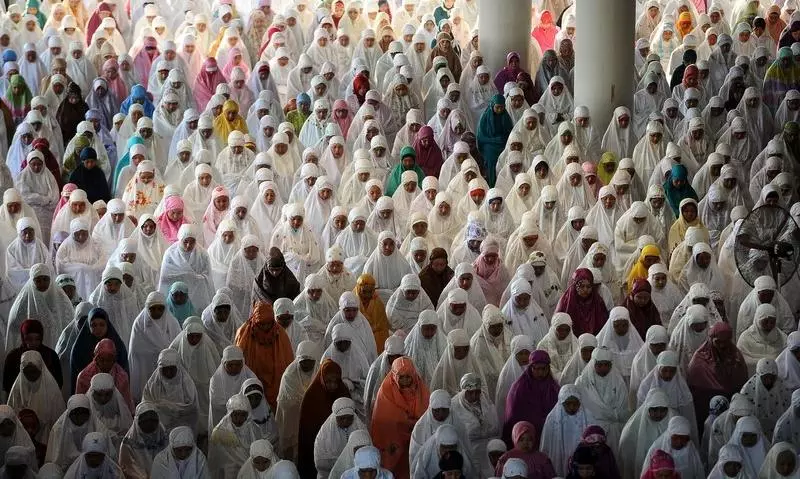
Muslim and non-religious populations grow fastest, Christianity declines
text_fieldsBetween 2010 and 2020, the global Muslim population grew by 347 million, more than all other religious groups combined, largely due to its younger age structure and higher fertility rate, whereas Christianity, though still the largest religion, declined in proportion due to religious switching and older demographics.
A new report by the Pew Research Centre, based on over 2,700 surveys and censuses from 117 countries, highlights that Muslims not only expanded their numbers but also increased their share of the global population, rising to 25.6 per cent in 2020.
The demographic advantage of Muslims stems from a significantly younger population, with 35 per cent under the age of 15 in 2010, coupled with the highest total fertility rate across religious groups—an average of 3.1 children per woman in the 2010–2015 period, the report said.
In contrast, Christians and other major religious groups had older populations and lower fertility rates, limiting their natural growth. Hindus, who had 31 per cent of their population under 15 in 2010, grew by 126 million to reach 1.2 billion globally, but their overall share remained comparatively stable, according to the Pew report.
Christianity’s global population increased by 122 million, reaching 2.3 billion by 2020, yet its share of the world population declined to 28.8 per cent, a one per cent drop attributed mainly to religious switching. This trend was especially strong in early adulthood, where many individuals shifted from Christianity to no religious affiliation. Muslims and Hindus were the least affected by such switching, helping them maintain and expand their populations at a steadier rate.
The group of people with no religious affiliation, including atheists and agnostics, recorded a substantial increase of 270 million over the decade, reaching 1.9 billion and comprising 24.2 per cent of the global population. This group is now the third-largest in the world, following Christians and Muslims, and continues to grow, primarily fed by those leaving Christianity.
The Muslim population in Lebanon, for instance, rose from 62 per cent to 65 per cent following an influx of Syrian refugees, and Muslims now account for six per cent of Europe’s population.
Meanwhile, in the six Gulf Cooperation Council countries—Bahrain, Kuwait, Oman, Qatar, Saudi Arabia, and the UAE—migrants form a significant portion of the population, with many being Christians and Hindus.























